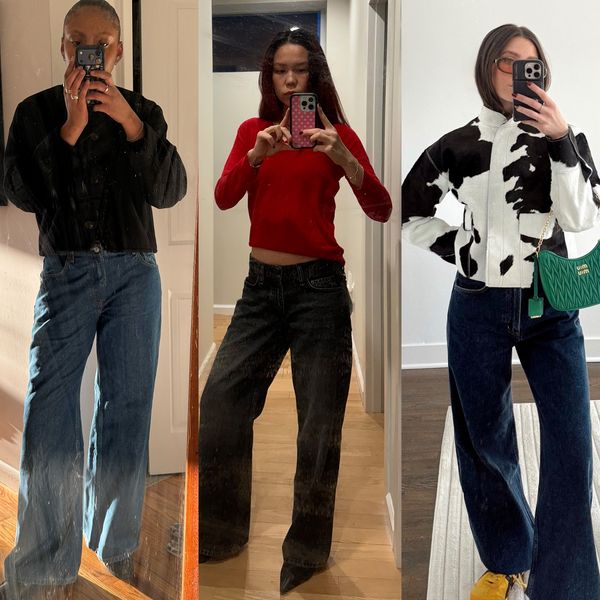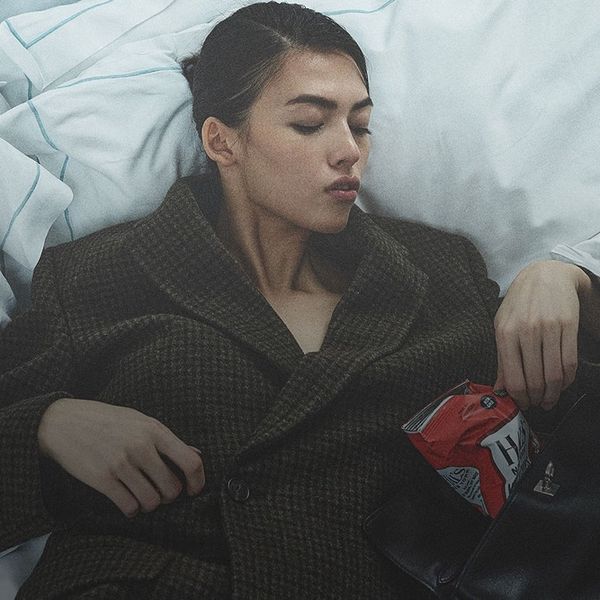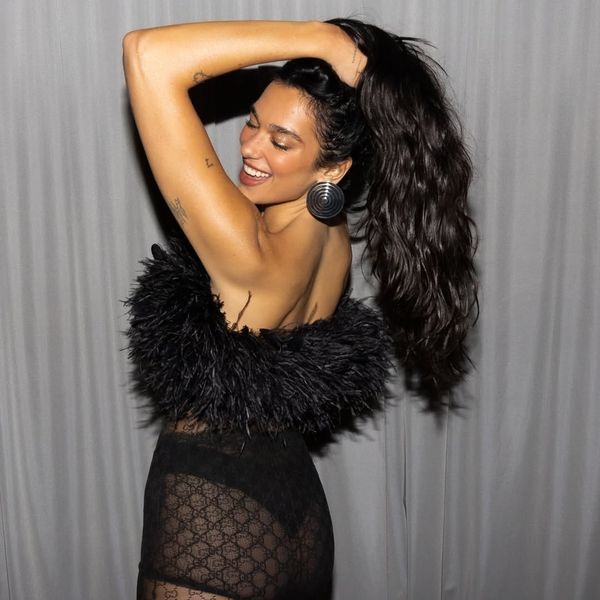The Highly Personal Process of Curating a Storefront
Beyond product, these design elements offer a glimpse inside these designer’s minds.
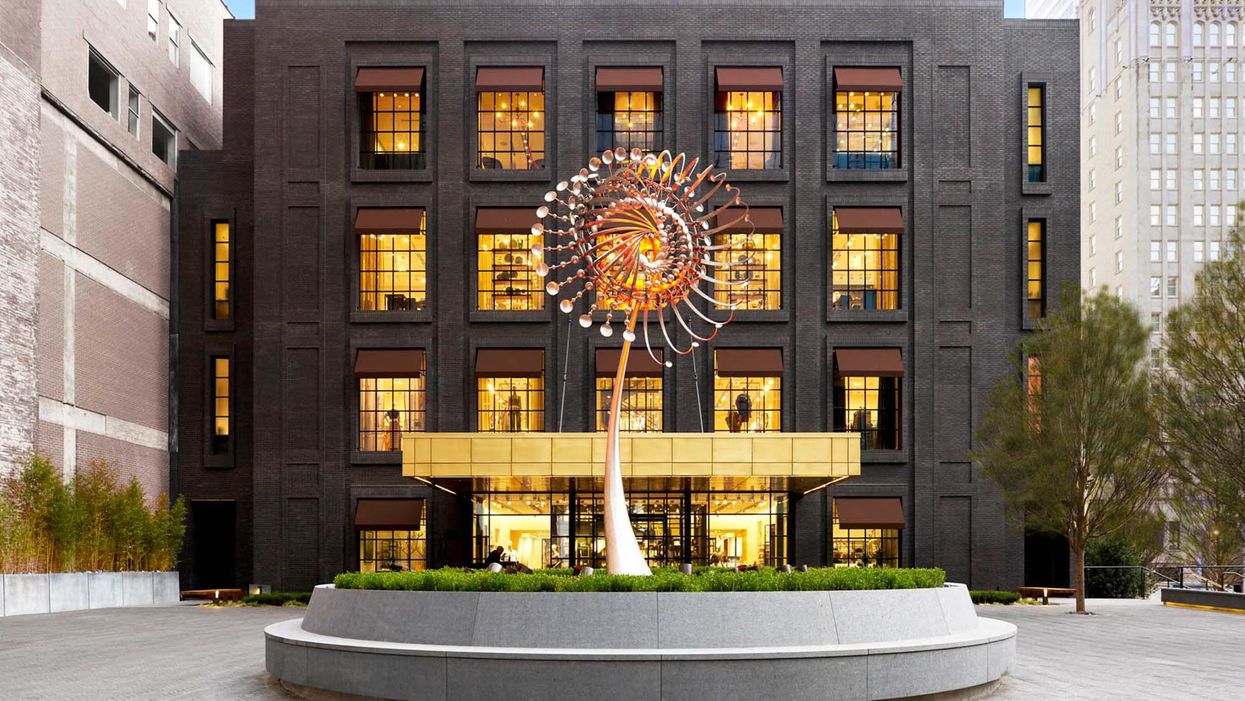
As a resident of the Upper East Side, a stroll down Madison Avenue always prompts me to stop and stare in front of the Gabriela Hearst flagship store. Though always stunning, it’s not the clothes that catch my eye, but the glittering collection of crystals that perch open on a front table in full view of the street. A reflection of the latter half of the rainbow, each mineral is completely unique from its counterparts. Ragged or smooth, clear or opaque, large or small. From my vantage point, the collection serves as a sort of portal into Hearst’s mind and creative process, sometimes even more so than the fashion itself.
The proof of which lies in her designs where you’ll find belts adorned with sliced agate and crystal embellished sheath dresses. This love affair with minerals and stones even led to the discovery of icon and American art dealer Hester Diamond, who wielded significant influence over Hearst’s Spring ‘22 collection. “Nature always offers the most breathtaking beauty that human eyes can see,” Hearst said in her show notes. So it seems only fitting that the designer display these passions in her store, likening the space more to a museum or at least a creative experience than merely a transactional atmosphere.
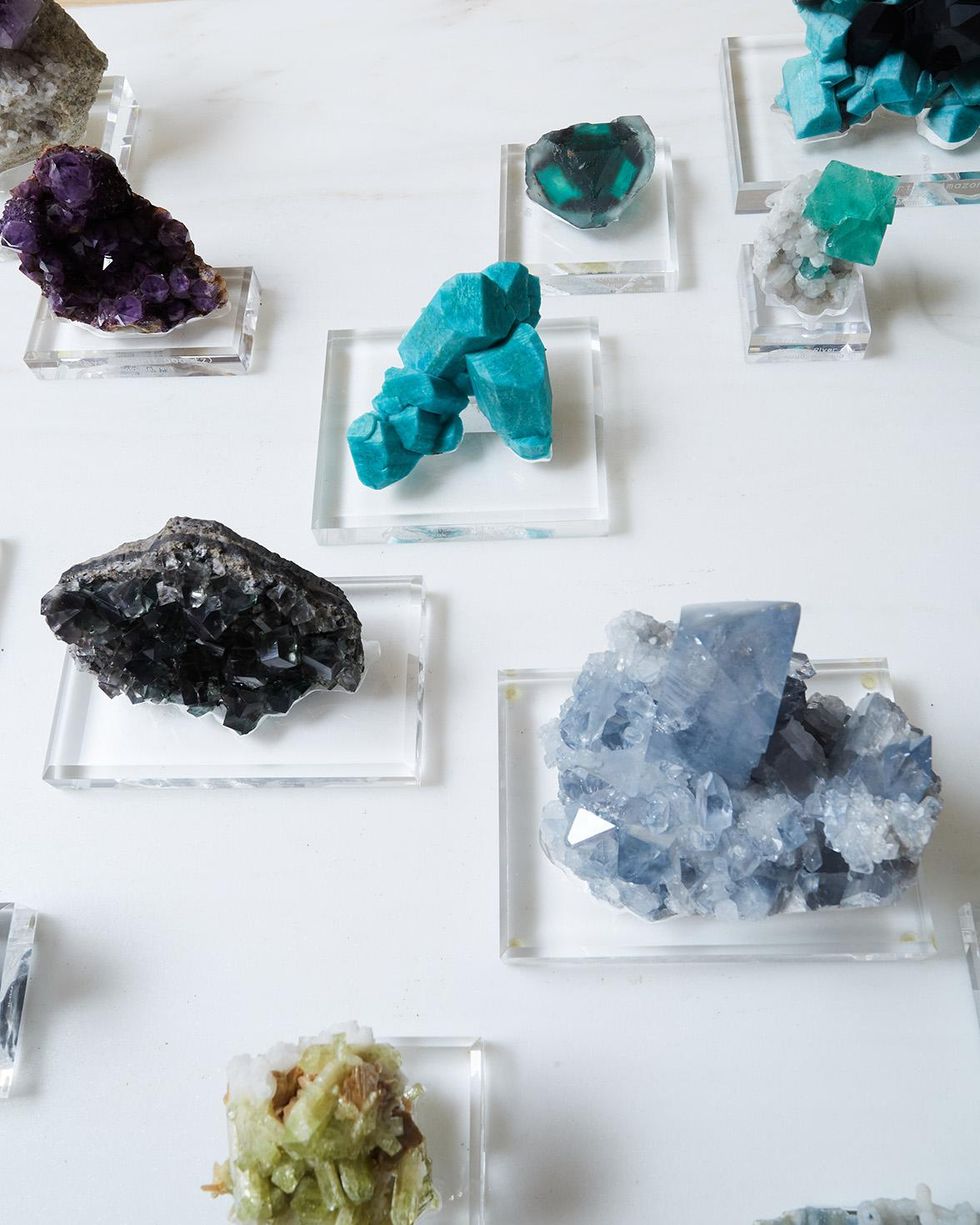
Photos: Courtesy of Gabriela Hearst
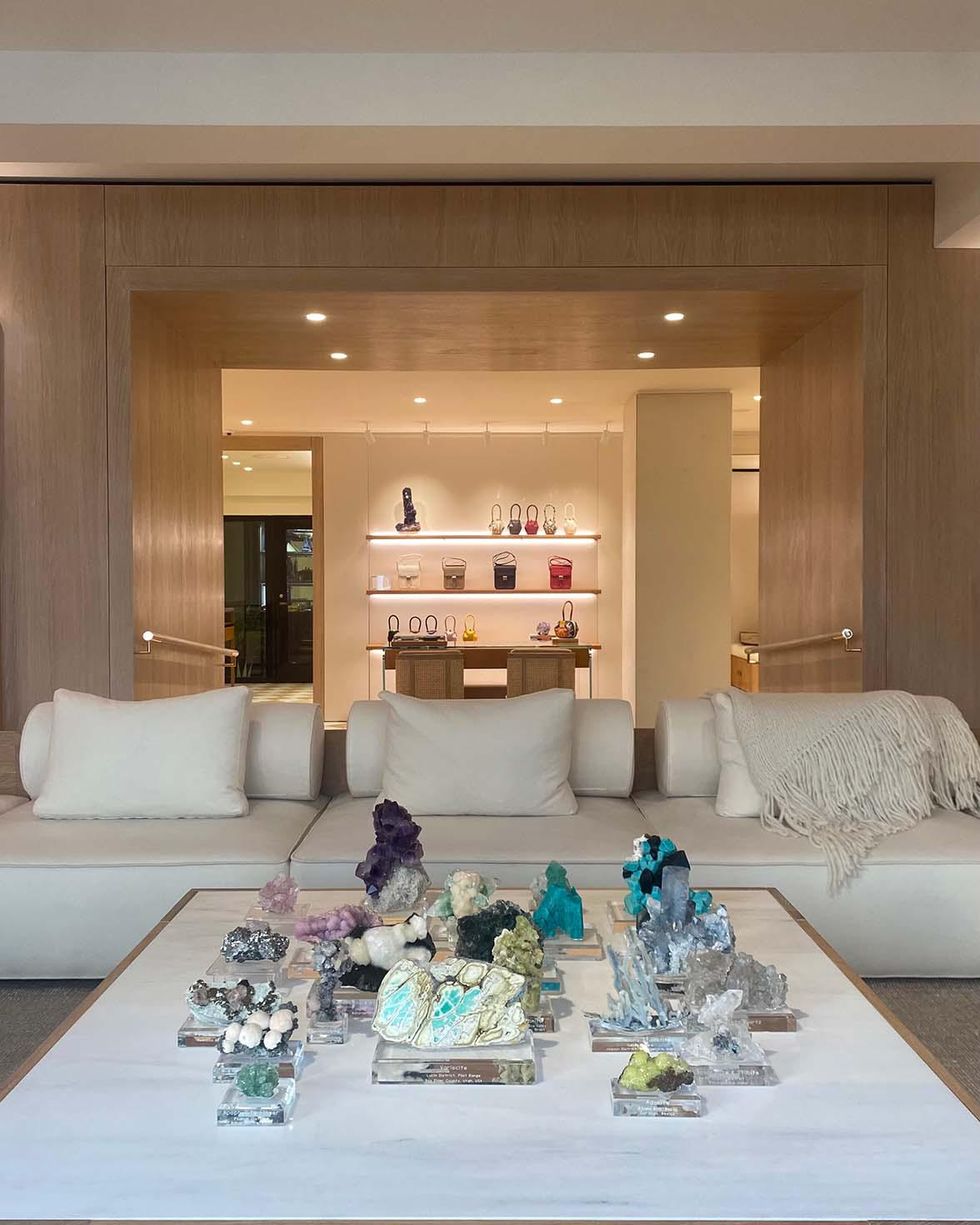
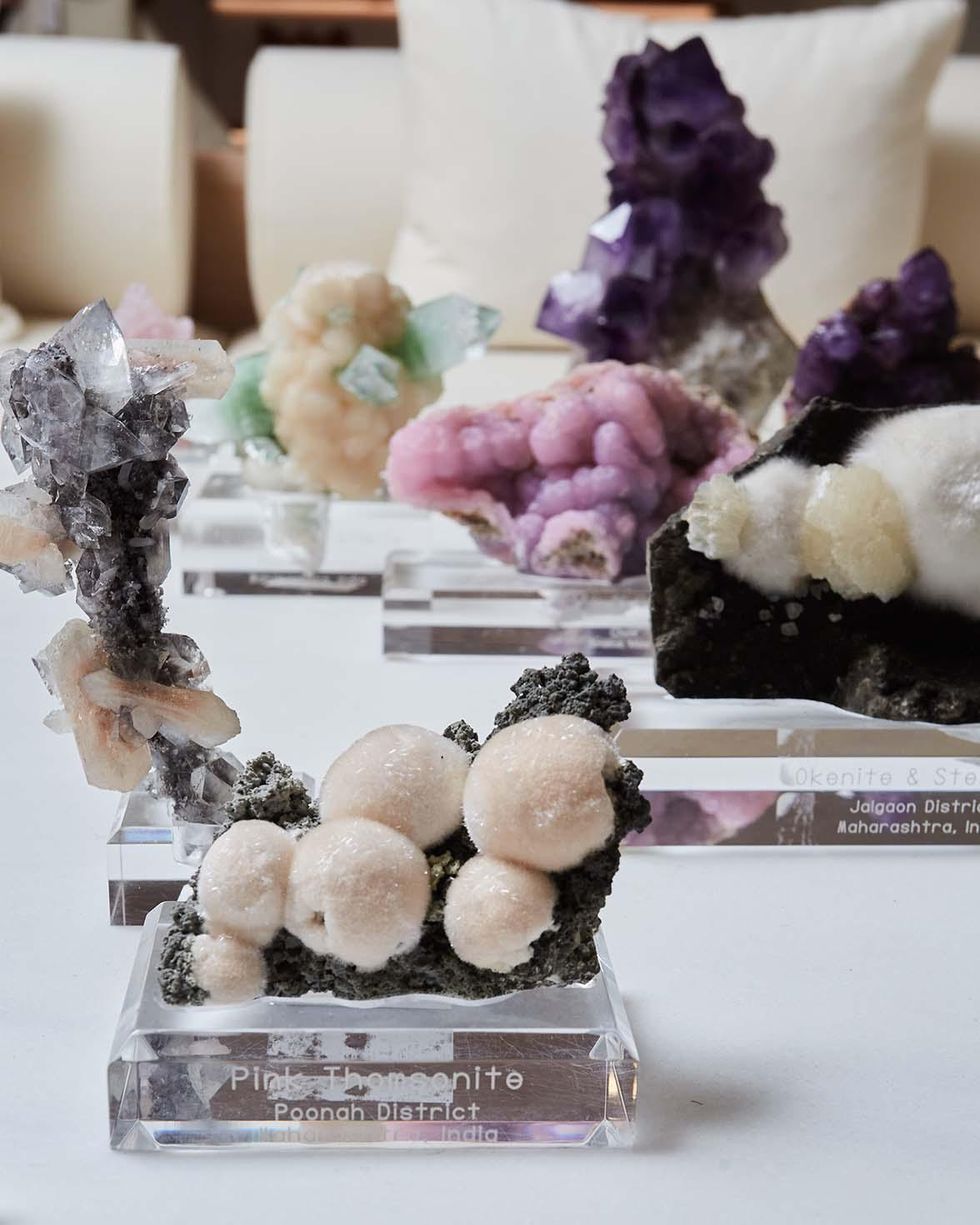
In the vein of museum-like artefacts, the foot traffic on Dallas’ Main Street (in Dallas, Texas) might believe they’ve stumbled upon an art gallery rather than a fashion boutique when they pass multi-brand retailer Forty Five Ten. Before shoppers even cross its threshold, they are greeted by kinetic, wind-powered sculpture Lucea, commissioned from artist Anthony Howe.
Beyond their sartorial offerings (the likes of which range from Dries Van Noten to Saint Laurent to Erdem), the goal of the design process can be summed up as an effort not to overshadow but instead to complement or frame the fashion. “The boldest design moves are in museum-quality art pieces and sculptures by the likes of Jose Dávila, Ugo Rondinone, Tony Tasset, Ryan Nord Kitchen, Aaron Curry, Rainer Judd, and many more,” says president and COO Anne Wallach. “We look for luxurious finishes and—when not custom—furniture by designers like Bertoia and Frank Gehry. Other interior features include tiles by Cerámica Suro, Arabescato marble, and a custom, ornamental glass staircase.”
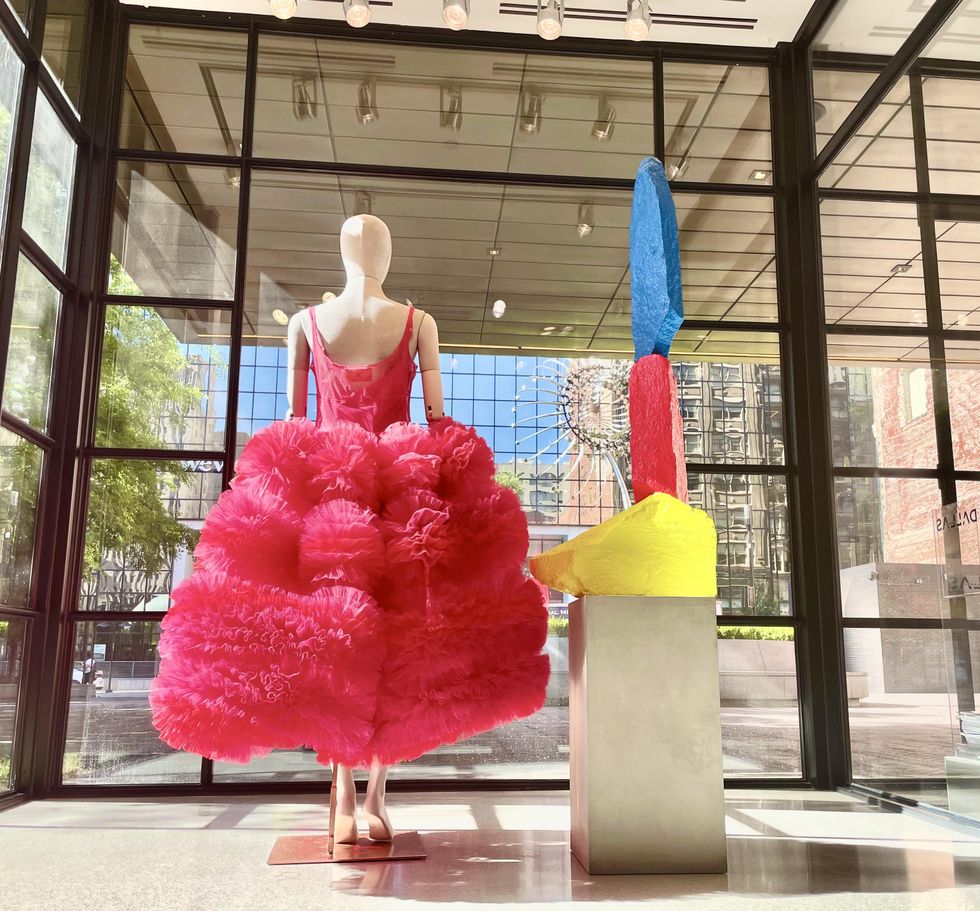
Photo: Courtesy of Forty Five Ten
Art, a form of creative expression not far off from fashion, is often a primary concern, as is the case with sustainably-minded Another Tomorrow’s West Village location. “The art is a combination of our personal collections,” explaions founder and CEO Vanessa Barboni Hallik, “the art includes the first major piece of photography I bought myself in my 20’s, Alessandra Sanguinetti's The Necklace, as well as a number of [creative director] Jane [Chung]’s own framed editions from artist Wolfgang Tillmans’ Neue Welt portfolio. The books are also ours, from The Whole Earth Catalogue, a deep personal reference of mine from childhood, to Vivane Sassen, a huge inspiration for Jane, to books on climate science, indigenous architecture, and work authored by a number of women we have profiled through our Women For Tomorrow series.”
These boutiques allow founders, specifically those in possession of a direct-to-consumer storefront, to say a bit more about themselves without using any words at all. “I find a store to be a wonderful design opportunity and challenge because it needs to express a coherent story, while welcoming a far wider range of humans to engage in a somewhat specific set of experiences that need to be functional and pleasurable,” adds Barboni Hallik, noting the goal of the store is to both inspire and to tell a story.
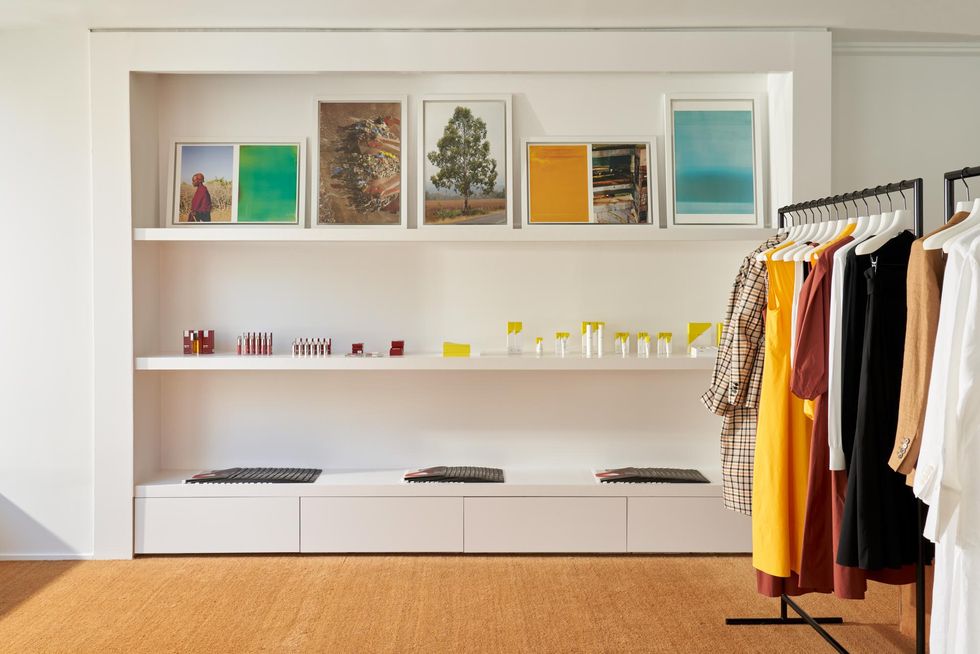
Photo: Courtesy of Another Tomorrow
In designer Mara Hoffman’s first flagship store, you’ll find an assembly of plant life that rivals any ready-to-wear collection. Instead of an interior designer or architect, Hoffman collaborated with trusted landscape designer Kari Elwell of Mingo Designs to curate a botanical oasis smack in the middle of SoHo. “I think my design sensibility always leads with plants,” the designer tells us. “I feel like they're medicinal just by existing.”
The other, more traditional components of the store (i.e. garment racks and displays) orbit around a century fixture: a large palm tree named Gloria, an “epic mama” as Hoffman depicts her. A step-like architectural element at the back of the space serves as a home to cascading planters. “I wanted to create a space that you walk into and you feel things as opposed to this commercialized experience that you're brought into to acquire more things.” The store also houses a rotating series of like-minded artists to further encapsulate the ethos of the brand.
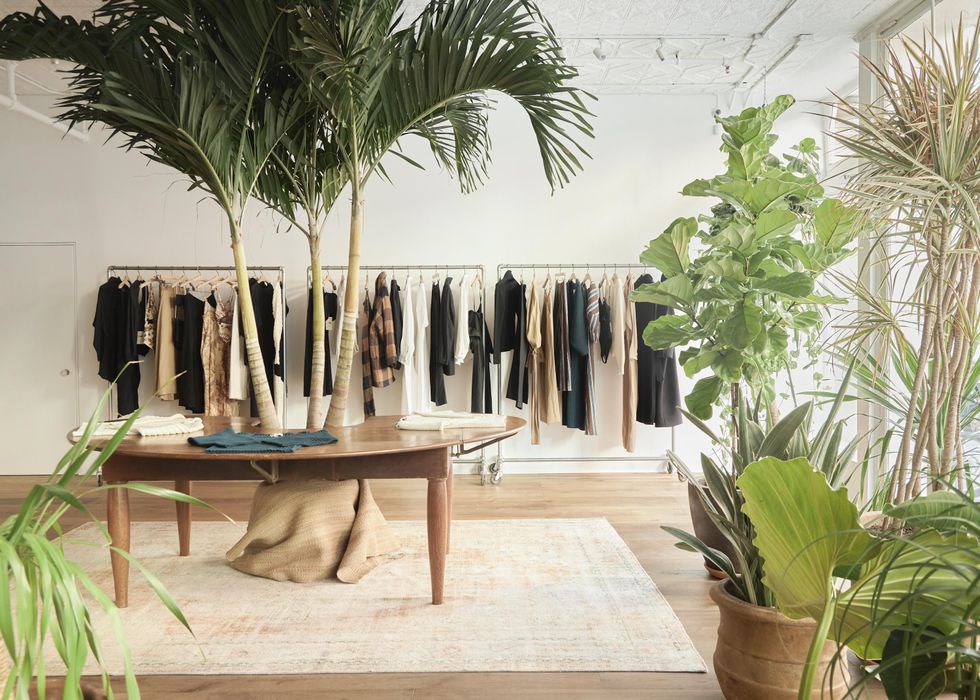
Photo: Courtesy of Mara Hoffman
We stumbled upon another intriguing not-for-sale collection in Beth Bugdaycay’s Foundrae store. In addition to the fascinating display of available fine jewelry, old books that used to clutter her apartment now line the walls of her Lispenard Street boutique. I’m so inspired by books,” reveals Bugdaycay. “l love them for their design and also the content is a big part of my research.” Like a library, visitors have the ability to actually check out the books. “There is a reason for them to come in and out without feeling obligated to buy something.”
Customers and, more often than not, those tagging along need somewhere to rest their weary souls—read: soles. Beyond eclectic (and specific) collections comes the furniture and decor. “Everything in our store is a treasured, collected personal item of mine,” the co-founder and creative director adds. “I have antiques, vintage pieces, artwork, and sculpture from contemporary artists.”
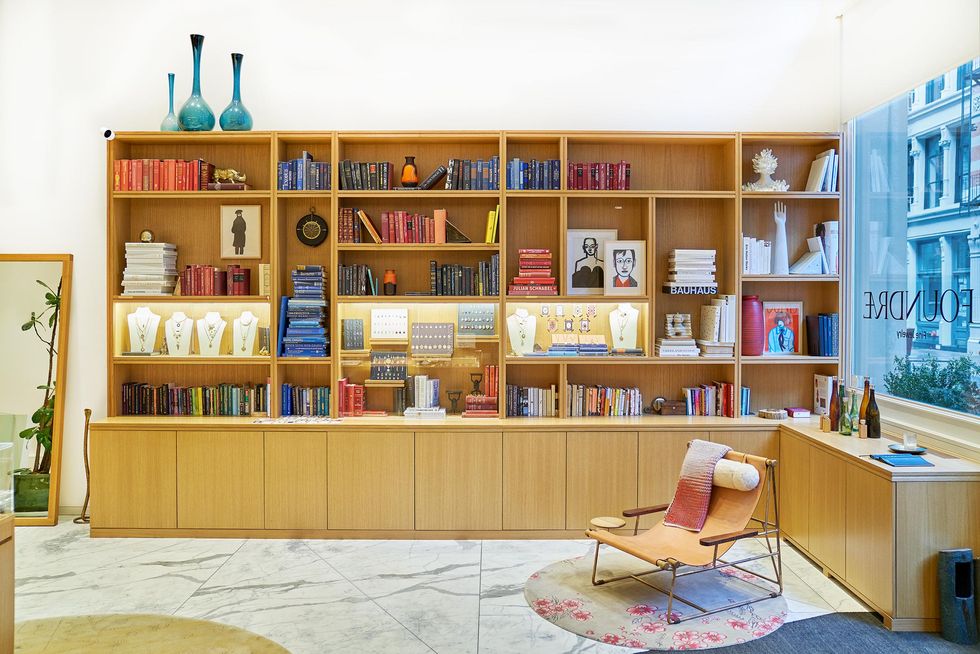
Photo: Courtesy of Foundrae
“All of the elements in the store speak to influences that inspired all of our different collections,” says Marlo Laz designer, Jesse Marlo Lazowski. “It’s almost a peek inside of my mind and how I collect memories of travel, art, and design that ultimately get funneled into jewelry designs.” The Bleecker Street store is home to Marlo Lazowski’s personal collection including a Sottsass mirror, a favorite rug acquired on a trip to Marrakech years prior, and a vintage Platner chair recovered in a storied Venetian fabric.
When curated by the same mind as the designer, the items can often play into current collections. “The sconces in the second room of our shop are vintage Italian, and when I saw them I was immediately drawn to the eye shape that came through to me. Although not so obvious, to me, they were the perfect nod to our Eyecon collection.”
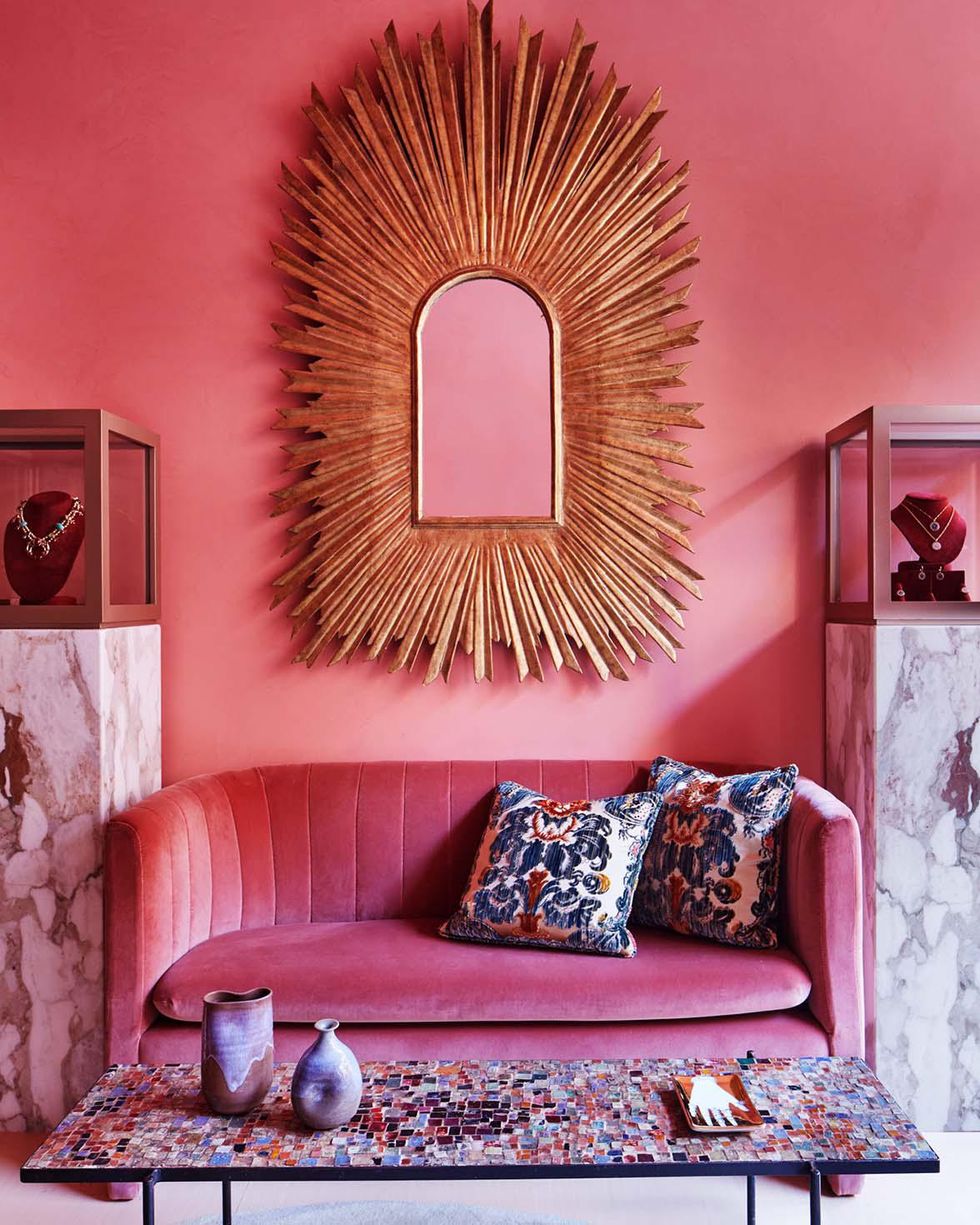
Photos: Courtesy of Marlo Laz
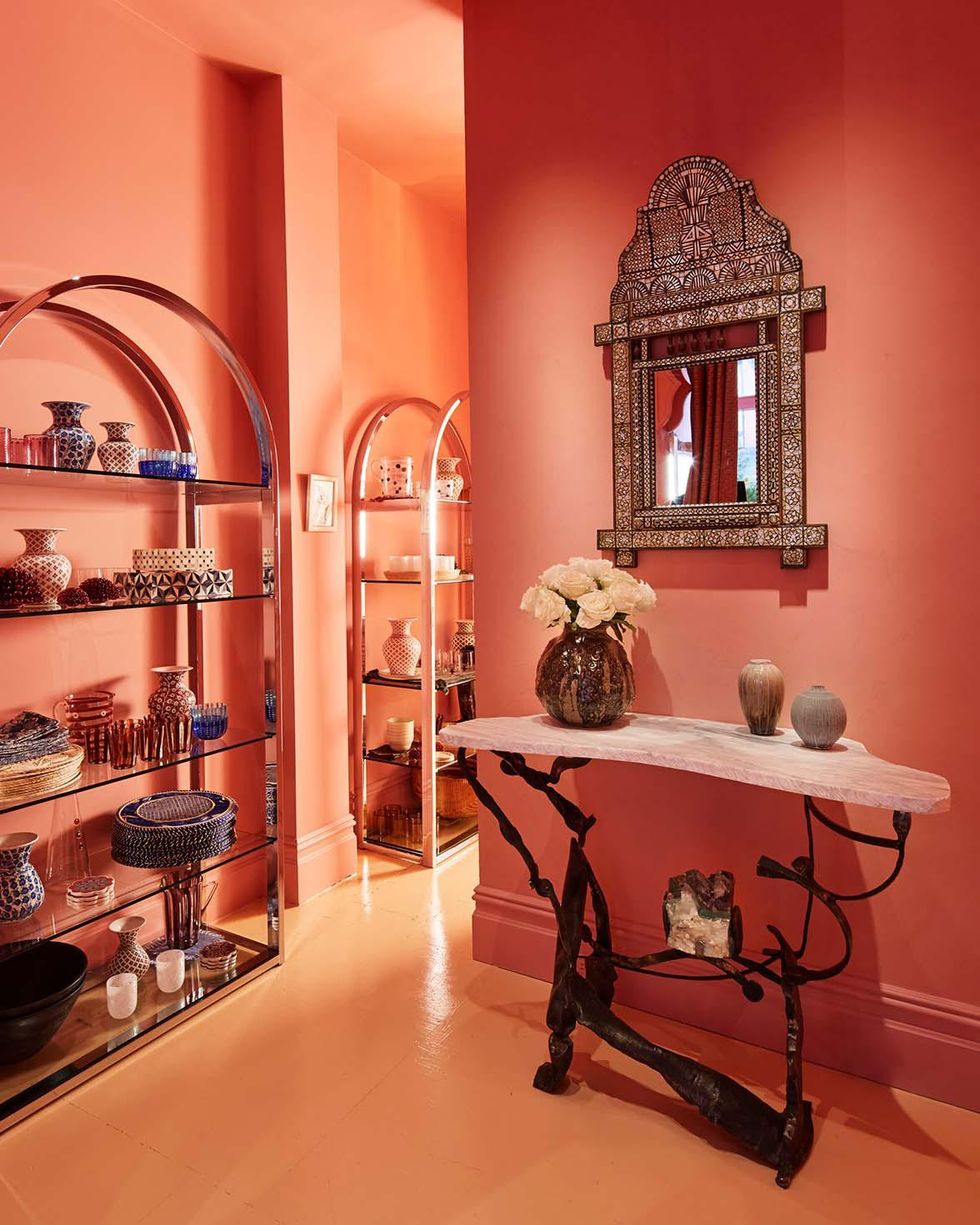
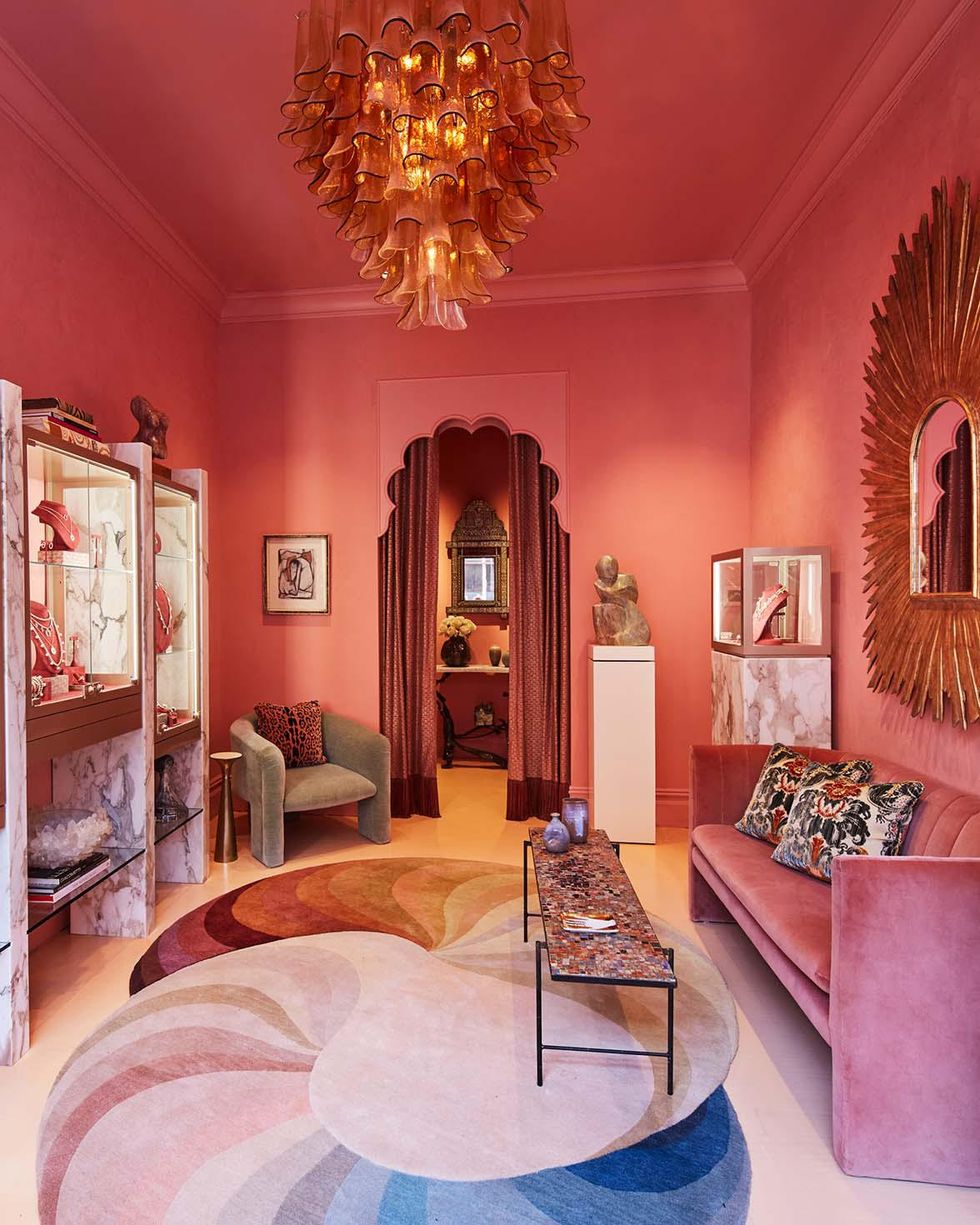
In an unsurprising discovery, these stores were all curated by someone who views the space as something akin to a home.” More than anything, we want our clients to feel comfortable, so placing interesting seating vignettes, fresh floral, music, art, sunlight are all things we think people love about their own homes,” reiterates Forty Five Ten’s Wallach. The highly conceptual stores are living, breathing modules that evolve as fashion does. “Just like we rearrange décor and pieces in our homes for a refresh, we do the same here, moving and repositioning elements to give the space and garments new light and perspective.”
The common pressure to buy something pales in comparison to a desire to be inspired. It’s no secret that brick and mortar offerings often err towards the experiential to attract customers, but these spaces aren’t relying on the latest in AI or Instagram bait. Instead, they’re allowing consumers to peek inside their creative processes, an effort achieved with items sans a for sale sign. In essence, a store should no longer feel like a store.
Top Photo: Courtesy of Forty Five Ten
Want more stories like this?
Shop 9 Pieces by Our Favorite Eclectic Jewelry Designer
7 Creatives Share Their Favorite Local Gift Shops Across the U.S.
How Your Favorite Fashion Boutiques Are Adapting to the Current Retail Climate

